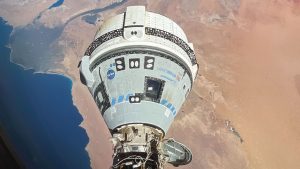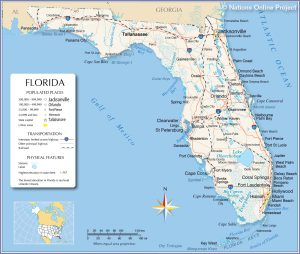Expedition 11 Arrives on Soyuz TMA-6


Soyuz TMA-6 lifted off on April 14, 2005, with Expedition 11 commander Sergei Krikalev, Flight Engineer John Phillips, and European Space Agency astronaut Roberto Vittori, who would be taking care of another experiments package on the International Space Station. Sergei Krikalev was making his sixth space flight, tying American Apollo moonwalker John Young for the record of most space flights, and third visit to the International Space Station.
Before the flight, he remarked on how being an Expedition Commander differed from being a Flight Engineer: “I think that’s a very subtle issue, because when you fly a crew of two or three, the difference between the Commander and every other crewmember is very subtle. In this case you work as much, and maybe even harder. … I think for every Commander, safety of the mission, mission success, is a primary goal. Mission success is again a very complicated issue.”
His primary concerns involved handling the planned experiments along with station maintenance with only a two-man caretaker crew. He also hoped for the Shuttle Return to Flight mission to arrive in May 2005. When Soyuz TMA-6 docked on April 16, the two Expedition crews began a weeklong routine of safety briefings and handover duties. They worked together to handle some maintenance that included flushing the coolant system and replacing an umbilical in Quest along with resizing the American EMUs. Roberto Vittori also got started on his experiment package, dubbed “Eneide.”
Eneide
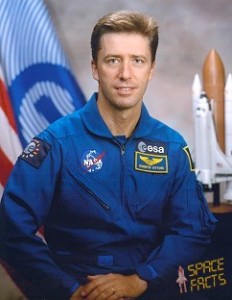
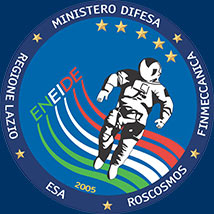 Eneide was an experiments package primarily on behalf of the Italian Ministry of Defence and Italian Chamber of Commerce. Experiments included tests of sensory orientation in microgravity, the performance of bone-producing osteoblast cells in microgravity, a study of the germination of plants in microgravity, observations of the Earth’s magnetic field and a test of the EGNOS satellite navigation system for air travel. Roberto Vittori also spoke to students in Italy and assisted with some student experiments.
Eneide was an experiments package primarily on behalf of the Italian Ministry of Defence and Italian Chamber of Commerce. Experiments included tests of sensory orientation in microgravity, the performance of bone-producing osteoblast cells in microgravity, a study of the germination of plants in microgravity, observations of the Earth’s magnetic field and a test of the EGNOS satellite navigation system for air travel. Roberto Vittori also spoke to students in Italy and assisted with some student experiments.
The experiments package was completed successfully and Roberto Vitorri returned to Earth with Expedition 10 and Soyuz TMA-5 on April 24.
Expedition 11
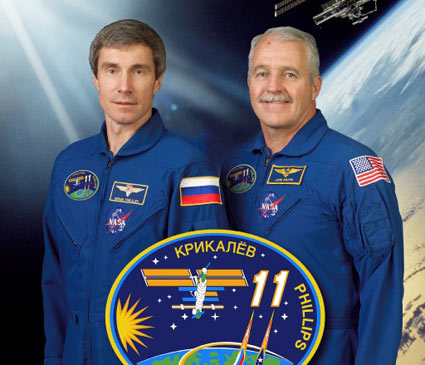
After the departure of Expedition 10, Krikalev performed some maintenance on the condensate removal system of the offline Elektron oxygen generation system. It continued to cause problems, however, and the crew resorted to burning oxygen-generating candles. He also transferred water from the Progress M-52 to the space station and transferred waste water back to the Progress tanks. Phillips handled maintenance with a malfunctioning treadmill and packed items for return to Earth on the Space Shuttle. Both crewmen assisted with tests of the SSRMS that would hopefully permit the robotic arm to be remotely controlled from the ground.
Houston told the crew that the launch of STS-114, the Shuttle Return to Flight, would be delayed until at least July 13 to provide extra time for studying the effect of ice damage. Preparations of the arrival of STS-114 continued with work on a digital camera that would be used to photograph discovery for analysis on the ground. They also cleared items away from the Unity hatch that would be used to access the MPLM and cycled the docking port in Destiny’s nadir. Items that had been packed for return filled most of the available slots and was contributing to the cramped conditions on the International Space Station. The crew was certainly looking forward to the return of the Space Shuttle.
Progress M-52 was loaded with rubbish and transferred 217 kilograms of fuel to tanks on the space station, and then it undocked on June 15. The next day, Progress M-53 replaced it with Krikalev using the TORU controls to remotely fly it into its docking port. The crew photographed Tropical Storm Arlene. Phillips performed an experiment to measure muscle tone.
The major partners in the International Space Station were also responding to a power play from the Russians. With the original contract between NASA and the Russian space agency coming to the end, Russia was making noise about limiting access to its Soyuz spacecraft to Russian cosmonauts and paying passengers. They also insisted that cosmonauts should no longer be forced to work on American experiments. The Iran Non-proliferation Act prevented NASA from sending any more funds to Russia once the agreement already in place expired. Some parties suggested that, if Russia had its way, American astronauts would only have access to the station at times when the Shuttle was docked and there were no plans to have a Shuttle at the space station for more than three weeks at a time.
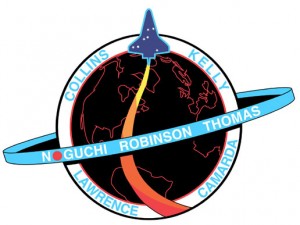
Back To Normal With Expedition 11
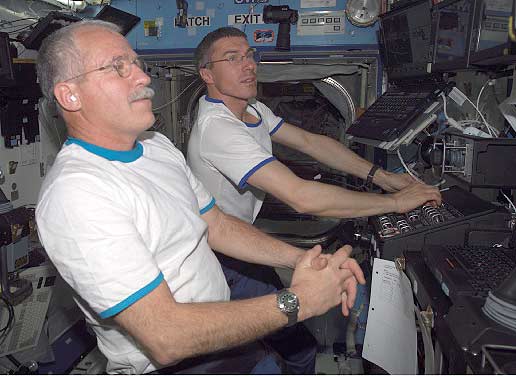
With the Discovery’s departure, life began to return to normal on the International Space Station. There was still some unpacking and stowing of gear brought up on the shuttle to do but Krikalev and Phillips put it off so they could focus on preparing the Pirs airlock and their tools for a planned EVA on August 18. A faulty carbon dioxide removal system on the Russian side failed and the Americans activated a backup while Russian controllers troubleshooted. Krikalev broke the duration record for total space flight time at 01:44 on August 12. In a reflective moment, he admitted that he hadn’t thought much about setting records. Doing good work on the space station was satisfaction enough for him.
On August 18, 2005, Krikalev and Phillips began the 62nd EVA devoted to the Space Station by exiting the Pirs airlock in Orlan suits. They retrieved three canisters from the Biorisk experiment designed to study the effects of microbes and fungi on materials used in the construction of the International Space Station and the effects of solar activity on the same organisms. They also prepared for the retrieval of samples from the SM/MPAC & SEED experiment meant to capture space debris and also study the effects of the space environment on a variety of materials that included polymeric materials, paint, and adhesives. In Zvezda’s wake, they installed a back-up television camera to assist with the docking of ESA’s ATV. They photographed the Kroma experiment that measured residue from station thrusters and retrieved samples from a Russian material exposure experiment. On the way back to Pirs, they retrieved the SM/MPAC & SEED samples and stowed them in the airlock. Because they were running behind schedule, controllers on the ground decided to delay some planned activities and the EVA ended with a duration of 4 hours and 58 minutes.
Routine maintenance and housekeeping included unpacking the supplies from STS-114 and replacing a valve on the faulty Vozdukh carbon dioxide remover. Progress M-53 was filled with trash and undocked on September 7, burning up in Earth’s atmosphere. Progress M-54 replaced it with cargo that included parts for the troublesome Elektron oxygen generator, oxygen, consumables, clothing, and experiments for Expedition 12. With the replacement of faulty parts in the Elektron, it was brought back to full operation.
While the crew began preparations for the arrival of Expedition 12, Earthside weather patterns once again impacted operations on the ground. Hurricane Katrina flooded New Orleans, including the plant where the Shuttle’s External Tanks were produced. Hurricane Rita forced the evacuation of the Johnson Space Center in Houston. Korolev assumed full control duties for the duration.
Expedition 11 Returns Home
Expedition 11 undocks from the International Space Station on October 11, 2005.
The International Space Station on eBay
[simple-rss feed=”http://rest.ebay.com/epn/v1/find/item.rss?keyword=International+Space+station&categoryId1=267&sortOrder=BestMatch&programid=1&campaignid=5337337555&toolid=10039&listingType1=All&lgeo=1&feedType=rss” limit=5]




